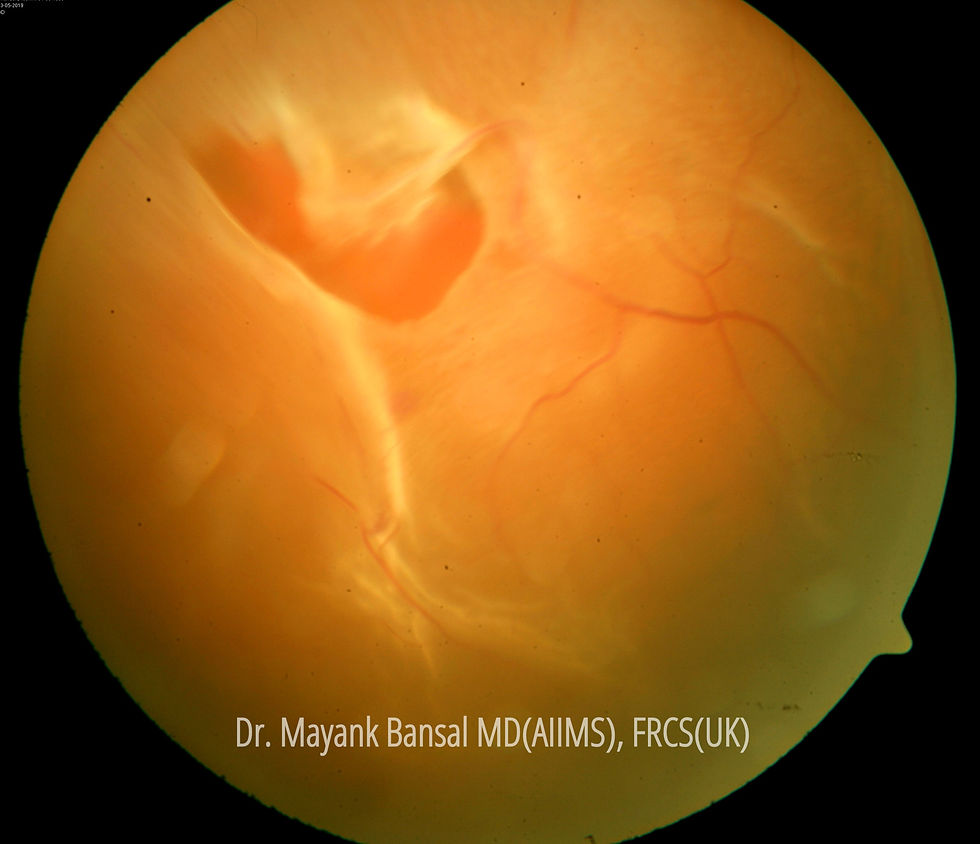Eye Floaters, Retina Laser & Retinal Detachment
- Dr. Mayank Bansal MD(AIIMS), FRCS(UK)
- Sep 21, 2020
- 2 min read
Updated: Nov 5, 2024
What are Eye Floaters?
Many people often experience seeing floaters or small mosquito like things in front of their eyes, which move when they move their eyes. Medically called muscae volatantes (literally translating to flying flies), these floaters signify the presence of some opacity in the back part of the eye which is called the vitreous. This gel like vitreous, with age or in degenerative conditions such as high myopia, gets liquefied i.e. becomes water like.


When it becomes this water like, it starts to collapse from within and detach from the retina. When this detachment begins it is often accompanied with flashes and floaters. Floaters come because of any opacity in the gel - vitreous.
Understanding Retina Laser and Retinal Detachment!
The flashes appear because any pull, or stimulus on the retinal cells or photoreceptors is perceived by the brain to be a flash of light, although no such flash actually happens. The floaters appear because some opacity or maybe sometimes a small bleed inside the eye accompanies this vitreous detachment from the retina.
If anyone experiences a new onset of floaters and flashes it is wise to do a dilated eye exam. The purpose of this eye exam is to screen for any retinal breaks which may accompany this detachment of the vitreous from the retina.

It is important to note here that sometimes the floaters may also exist without any retinal break. Also, there may be thinned out parts of the retina called retinal lattices, or other retinal breaks without floaters. These are not mutually exclusive.
Retinal Lattices are thinned out parts of the retina, which may exist in almost approximately 1 in every 10 individuals. These may be a cause of retinal detachment in the future, and are recommended to be lasered, especially if accompanied with floaters and flashes.

If a retinal break or lattice is found it is advisable to Laser it. In this retinal laser procedure a laser light is delivered to the Retina by your eye surgeon which causes a burn in the Retina helping in its adhesion to the underlying layer called the choroid. The benefits of laser in the presence of a retinal break, tear, hole far outweigh the risk of retinal detachment, which typically needs a rather elaborate surgery.



In case the Retinal Detachment is extensive, a Vitreo-Retinal Surgery is advisable. In this, using FDA approved, cutting edge technology, less than 1mm size , three small entries are made into the eye. The gel (vitreous) is removed, the fluid behind the retina is aspirated (removed). And the retinal break is 'sealed' using the Retinal Laser. To ensure the retina stays attached, the eye is filled with a special gas or Silicon oil and the patient is advised prone (or lying on the belly) position. Sometimes, we use an encircling silicon band to improve chances of long term re-attachment of the Retina.




Comments